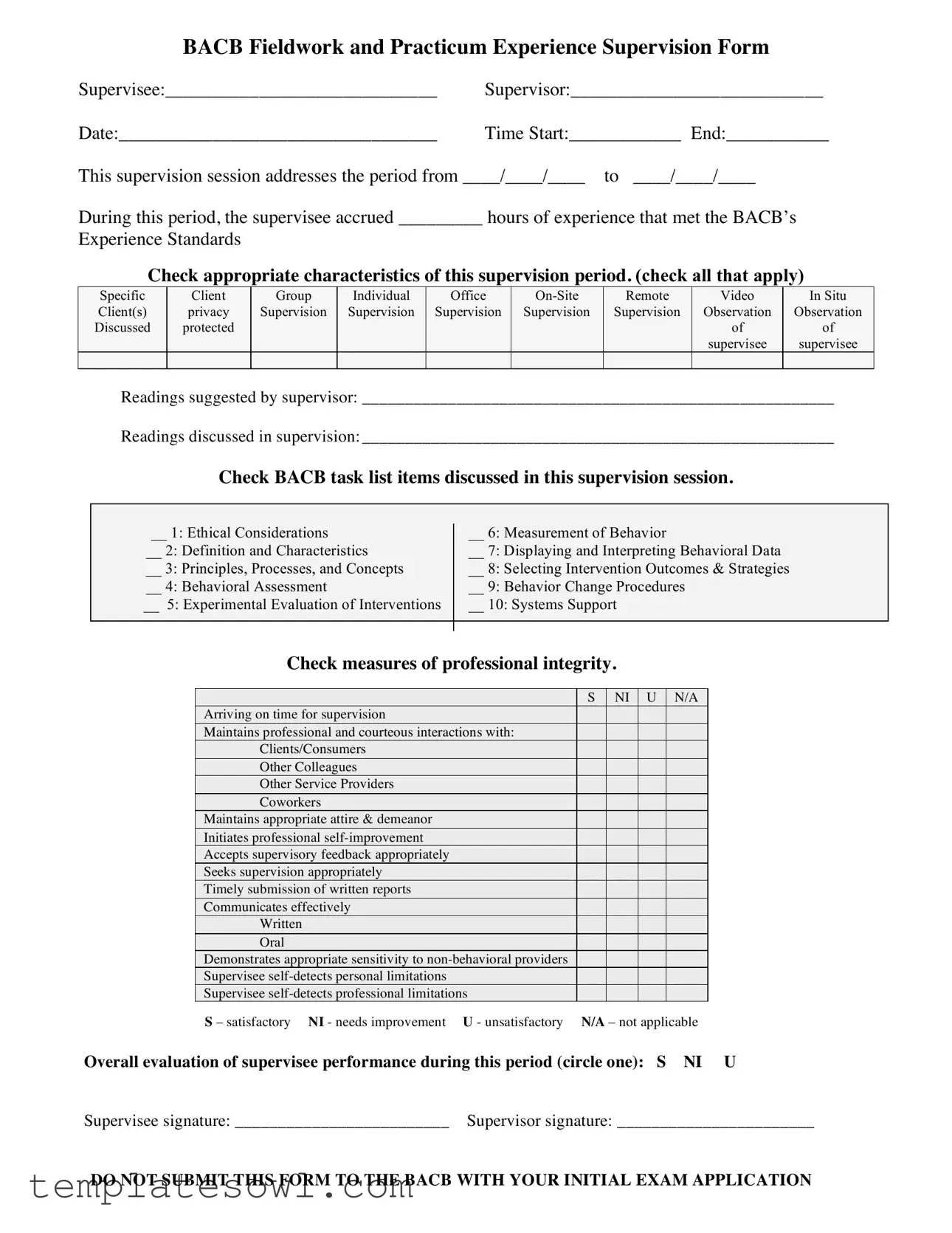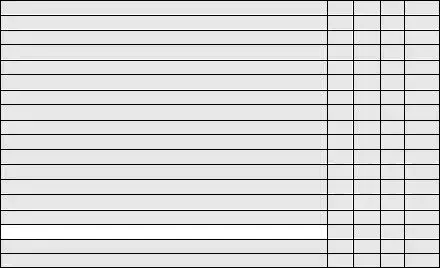What is the purpose of the BACB Fieldwork form?
The BACB Fieldwork form is designed to document the supervision experience of behavior analysts in training. This form captures essential details about the supervision session, including the date and time, the number of hours accrued, activities undertaken, and progress towards meeting the BACB’s Experience Standards. Essentially, it serves as a record of professional development and to ensure compliance with BACB requirements.
Who fills out the BACB Fieldwork form?
Both the supervisee and the supervisor are involved in completing the BACB Fieldwork form. The supervisee is responsible for providing his or her information and confirming the hours of experience gained. The supervisor provides insights into the supervisee’s performance, ensuring all relevant details about the supervision session are accurately recorded. This collaboration is vital for an effective supervision process.
What types of supervision settings can I indicate on the form?
The form allows you to check specific characteristics of your supervision period, including settings such as individual office, on-site, remote, video, and in situ supervision. Noting these details helps to clarify how services were delivered and illuminates the variety of experiences available to the supervisee.
What should I do if I need to indicate readings discussed during supervision?
In the section dedicated to readings, you can list any recommended and discussed readings. This part of the form provides an opportunity to highlight the learning materials that enhanced your supervision. By noting these readings, you also illustrate how you are expanding your knowledge and applying theory to practice in your fieldwork experience.
What evaluations does the form require regarding supervisee performance?
The BACB Fieldwork form includes a comprehensive evaluation of the supervisee’s performance. Supervisors assess several factors, including punctuality, professionalism in interactions, adherence to appropriate attire, and the ability to communicate effectively. Each criterion has options for satisfactory, needs improvement, unsatisfactory, or not applicable, helping to provide a clear picture of the supervisee’s professional integrity and areas for development.

